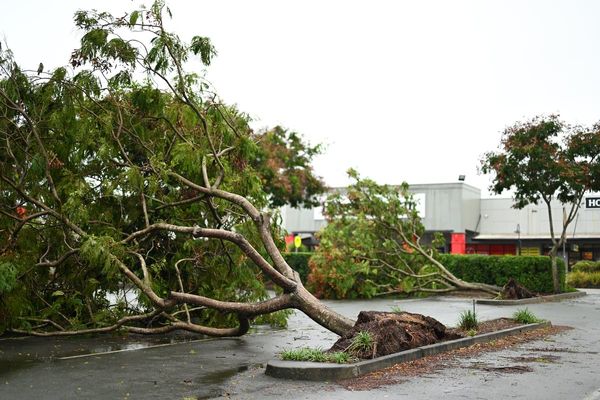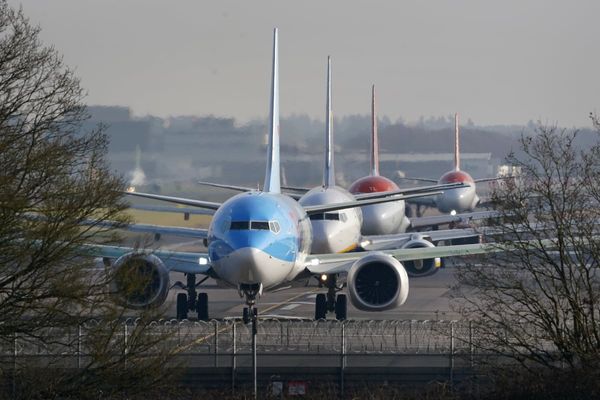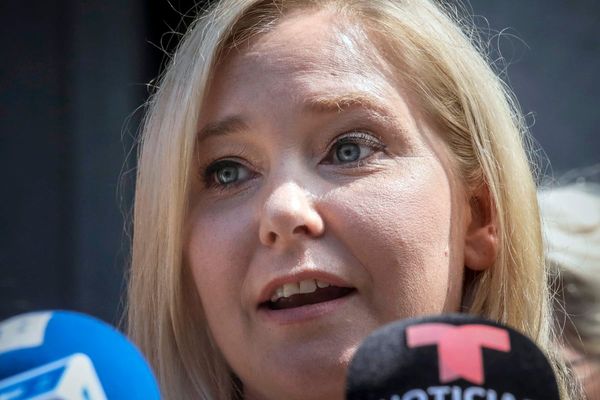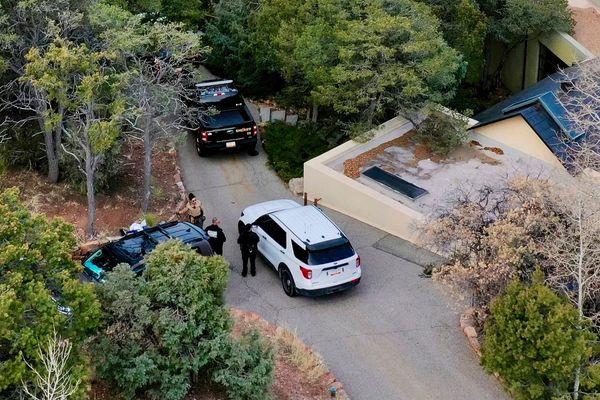After a second consecutive night of deadly Russian air attacks – against the capital Kyiv on April 23 and the eastern Ukrainian city of Pavlohrad on April 24 – a ceasefire in Ukraine seems as unrealistic as ever.
With Russian commitment to a deal clearly lacking, the situation is not helped by US president Donald Trump. He can’t quite seem to decide who he will ultimately blame if his efforts to agree a ceasefire fall apart.
Before the strikes on Kyiv, Trump blamed Ukrainian president, Volodymyr Zelensky, for holding up a deal by refusing to recognise Crimea as Russian. The following day, he chided Vladimir Putin for the attacks, calling them “not necessary, and very bad timing” and imploring Putin to stop.
The main stumbling bloc on the path to a ceasefire is what a final peace agreement might look like and what concessions Kyiv – and its European allies – will accept. Ukraine’s and Europe’s position on this is unequivocal: no recognition of the illegal Russian annexation.
This position is also backed by opinion polls in Ukraine, which indicate only limited support for some, temporary concessions to Russia. The mayor of Kyiv, Vitali Klitschko, also suggested that temporarily giving up territory “can be a solution”.
The deal that Trump’s envoy Steve Witkoff apparently negotiated over three rounds of talks in Russia was roundly rejected by Ukraine and Britain, France and Germany, who lead the “coalition of the willing” of countries pledging support for Ukraine.
Read more: Could Trump be leading the world into recession?
This prompted Witkoff and US secretary of state Marco Rubio to pull out of follow-up talks in London on April 24. These ended with a fairly vacuous statement about a commitment to continuing “close coordination and … further talks soon”.
And even this now appears as quite a stretch. Coinciding with Witkoff’s fourth trip to see Putin on April 25, European and Ukrainian counterproposals were released that reject most of the terms offered by Trump or at least defer their negotiation until after a ceasefire is in place.
Why is it failing?
The impasse is unsurprising. Washington’s proposal included a US commitment to recognise Crimea as Russian, a promise that Ukraine would not join Nato and accept Moscow’s control of the territories in eastern Ukraine that it currently illegally occupies. It also included lifting all sanctions against Russia.
In other words, Ukraine would give up large parts of territory and receive no security guarantees, while Russia is rewarded with reintegration into the global economy.
It is the territorial concessions asked of Kyiv which are especially problematic. Quite apart from the fact that they are in fundamental breach of basic principles of international law – the sovereignty and territorial integrity of states – they are unlikely to provide solid foundations for a durable peace.
Much like the idea of Trump’s Ukraine envoy, Keith Kellogg, to divide Ukraine like post-1945 Berlin, it betrays a fundamental misunderstanding of what, and who, drives this war.
Kellogg later clarified that he was not suggesting a partition of Ukraine, but his proposal would have exactly the same effect as Trump’s most recent offer.
Both proposals accept the permanent loss to Ukraine of territory that Russia currently controls. Where they differ is that Kellogg wants to introduce a European-led reassurance force west of the river Dnipro, while leaving the defence of remaining Ukrainian-controlled territory to Kyiv’s armed forces.
If accepted by Russia – unlikely as this is given Russia’s repeated and unequivocal rejection of European peacekeeping troops in Ukraine – it would provide at best a minimal security guarantee for a part of Ukrainian territory.
What it would almost inevitably mean, however, is a repeat of the permanent ceasefire violations along the disengagement zone in eastern Ukraine where Russian and Ukrainian forces would continue to face each other.
This is what happened after the ill-fated Minsk accords of 2014 and 2015, which were meant to settle the conflict after Russia’s invasion of Donbas in 2014. A further Russian invasion could be just around the corner once the Kremlin felt that it had sufficiently recovered from the current war.
Read more: Ukraine deal: Europe has learned from the failed 2015 Minsk accords with Putin. Trump has not
The lack of a credible deterrent is one key difference between the situation in Ukraine as envisaged by Washington and other historical and contemporary parallels, including Korea and Cyprus.
Korea was partitioned in 1945 and has been protected by a large US military presence since the Korean war in 1953. After the Turkish invasion of 1974, Cyprus was divided between Greek and Turkish Cypriots along a partition line secured by an armed UN peacekeeping mission.
Trump has ruled out any US troop commitment as part of securing a ceasefire in Ukraine. And the idea of a UN force in Ukraine, briefly floated during the presidency of Petro Poroshenko between 2014 and 2019, never got any traction, and is not likely to be accepted by Putin now.
The assumed parallels with the situation in Germany after the second world war are even more tenuous. Not only did Nazi Germany unconditionally surrender in May 1945 but its division into allied zones of occupation was formally and unanimously agreed by the victorious allies in Potsdam in August 1945.
Muddling up Potsdam and Munich?
By the time two separate German states of East and West Germany were established in 1949, the western allies had fallen out with Stalin but remained firmly united in Nato and western Europe. So the west German state was firmly protected under the US nuclear umbrella.
The agreements made in Potsdam didn’t have the same implication of permanence as the US suggestion to formally recognise Crimea as Russian territory. The suggestion was always that the allied forces would pull out of Germany at some stage, and restore the country’s sovereignty.
Most importantly, the allies did not reward the aggressor in the war or create the conditions for merely a brief interruption for an aggressor’s revisionist agenda.
After all, what has driven Putin’s war against Ukraine is his conviction that “the collapse of the Soviet Union was the greatest geopolitical catastrophe of the century”.
The Trump administration deludes itself that it is applying the lessons of Potsdam by recognising Russia’s territorial conquests in Ukraine and handing them over. Instead it is falling into the trap of the 1938 Munich Agreement. Negotiators in Munich tried, but failed, to avoid the second world war by appeasing and not deterring an insatiable aggressor – a historical lesson that doesn’t need repeating.
Stefan Wolff is a past recipient of grant funding from the Natural Environment Research Council of the UK, the United States Institute of Peace, the Economic and Social Research Council of the UK, the British Academy, the NATO Science for Peace Programme, the EU Framework Programmes 6 and 7 and Horizon 2020, as well as the EU's Jean Monnet Programme. He is a Trustee and Honorary Treasurer of the Political Studies Association of the UK and a Senior Research Fellow at the Foreign Policy Centre in London.
Tetyana Malyarenko does not work for, consult, own shares in or receive funding from any company or organisation that would benefit from this article, and has disclosed no relevant affiliations beyond their academic appointment.
This article was originally published on The Conversation. Read the original article.







